Since the horrible Gas attacks of World War I the gas
mask was a standard piece of equipment
of the German soldier throughout World War II.
Before we take a look at the masks themselves, we examine the gas mask cases (Gasmaskenbüchse).
Below, from left to right the
following cases are shown:
- early Reichswehr model case (1930-1935)
- early Wehrmacht model case (1935-1936)
- short Wehrmacht model case (1936-1938)
- long Wehrmacht model case (1938-1945)
- long Wehrmacht model case variation (1942-1945)
** dates mentioned are aproximately **
In the middle is the model that
was aprox. 24,5 cm long and was to be replaced by the model
2nd from the right (by an order from november 1941) which was
aprox. 3 cm longer.
It was ordered on april 1942 that the longer models should be given to the
Field Army, while the shorter
models should be given to the Replacement Army and Air Raid Protection (Luftschutz).
The designation GM30 or GM38 refers to the mask itself, and not to the cases !
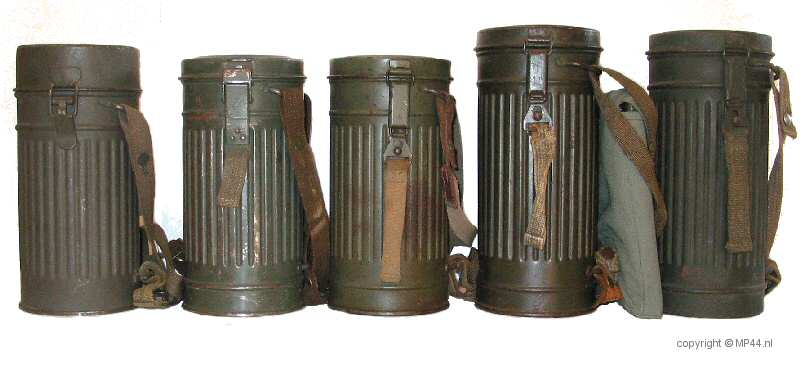
Reichswehr /Wehrmacht model case (1930 - 1935)
Below the first model, which was introduced in 1930, is shown
The height of this model is aprox. 26 cm and a diameter of aprox. 12 cm.
On the left a 1935 dated example is shown, while the one on the right is dated 1934
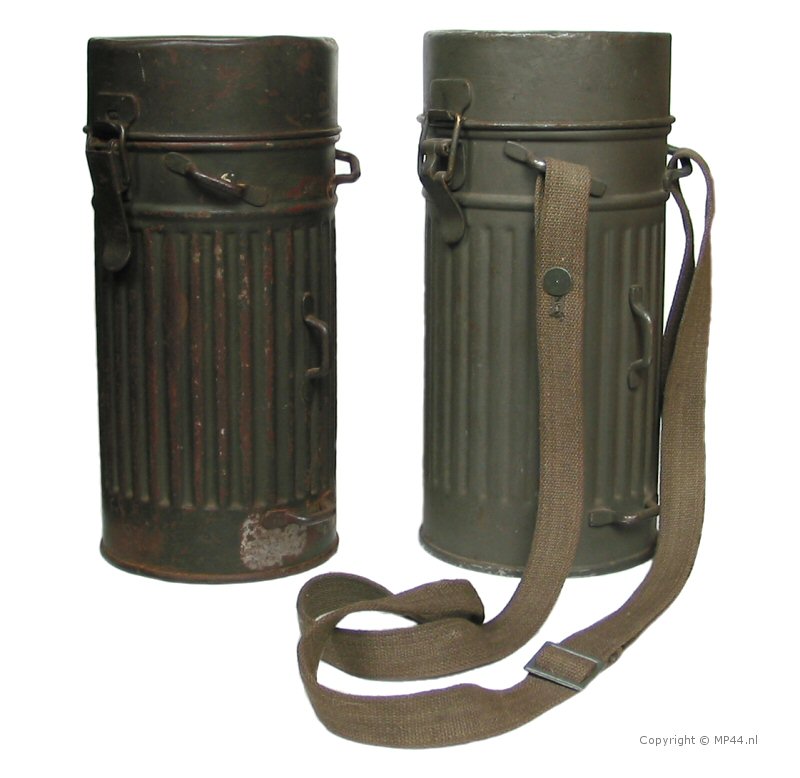
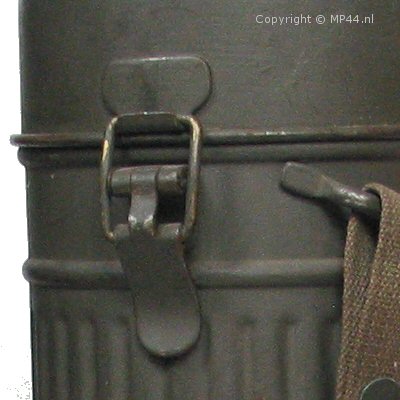
Here the closing latch is shown on the 1934 dated example
It reminds of the closing system on beer bottles from that period.
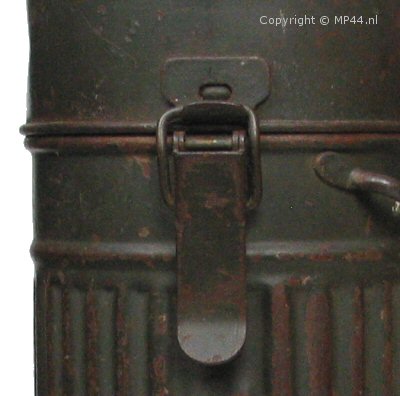
Here the closing latch is shown on the 1935 dated example
Notice the difference with the 34 dated model.
Below, the extra metal eye on the middle of the can is shown.
This eye is only encountered on this model of can
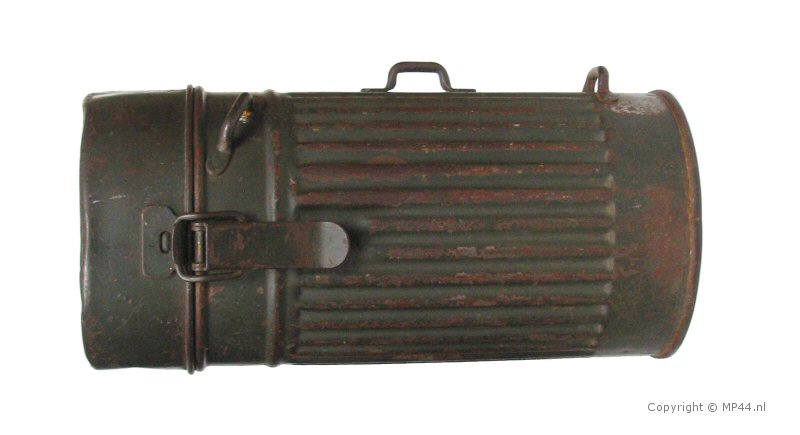
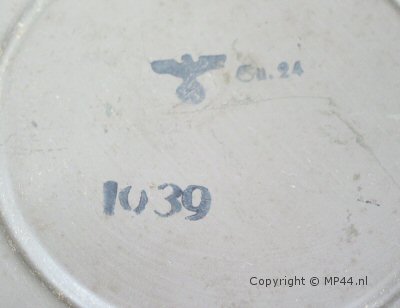
These stamps were found on the 1934 dated example
It looks like this can was inspected (Waffen Amt Stamp) in 1939

Some more details of the 1934 example
The 34 stamp on the inside (spare glass compartment).
there is also a manufacturer stamp
F.F.A.
but it is unclear what it stands for.

The opened spare
glass compartment whichs shows
a package of spare glasses.
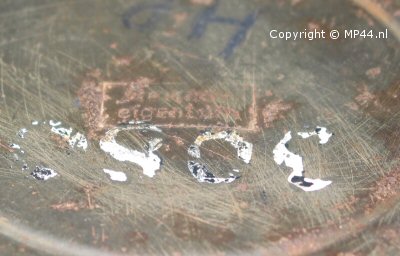
The underside of the 35 example is shown.
It shows a stamp "Reichs eigentum"
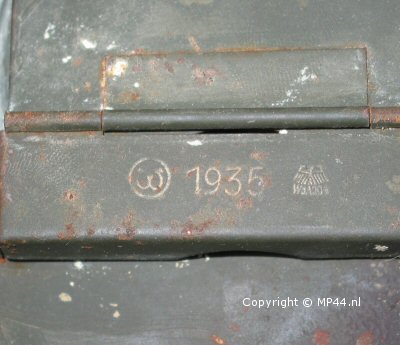
And the spare
glass compartment whichs
shows the following stamps:
maker mark (unknown)
date 1935
old Wehrmacht WaA stamp (WaA 204)
Wehrmacht model case (1935 - 1936)
Below the second model, which was introduced in 1935, is shown
The height of this model is aprox. 25 cm and a diameter of aprox. 12 cm.
This example is 1936 dated.
Several changes were made, a new
closing system was developed,
the middle bracket was removed, the can also had a reinforcement ring on the
bottom,
the lid was shortened, and the spare glass compartment was renewed.
Also the inside of the can is reinforced with an aluminium metal sheet.

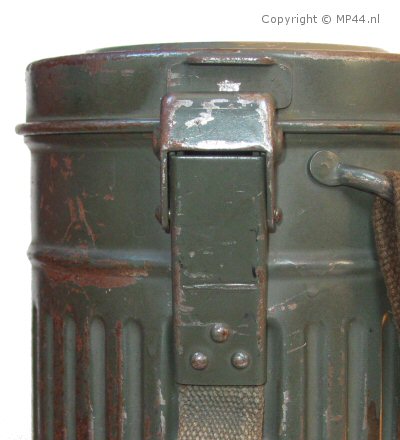
On the left a detail shot of the new closing system.
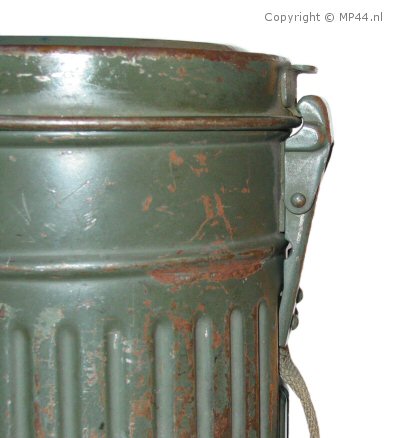
On the following three picture the method of opening is shown
#1 closed
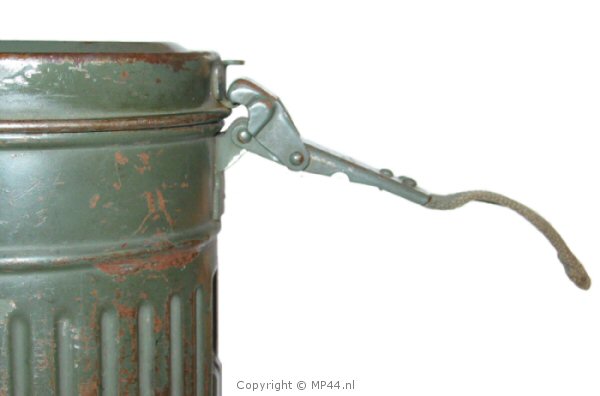
#2 half opened
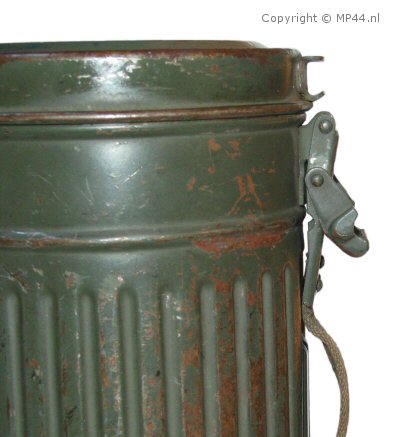
#3 opened
Below, the opened can is shown, which reveals the new style spare glass
compartment.
This style of compartment will remain until the end of the war (and even
after the war)
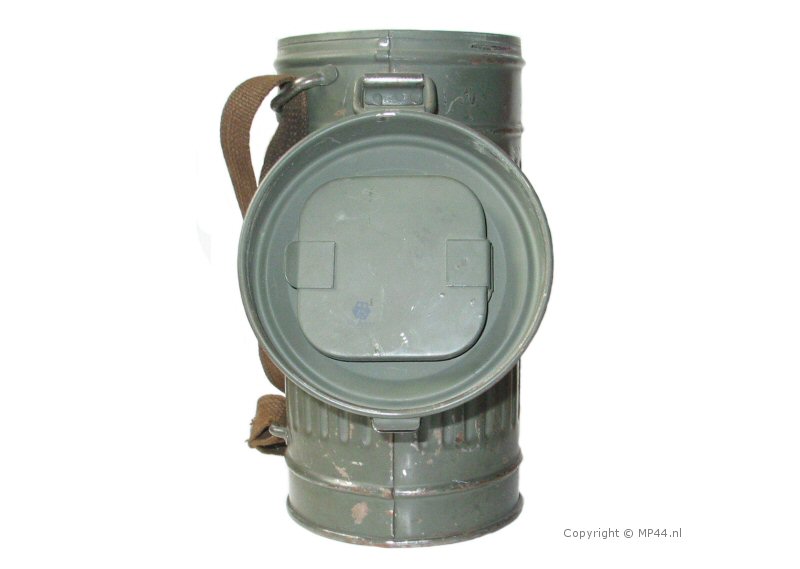
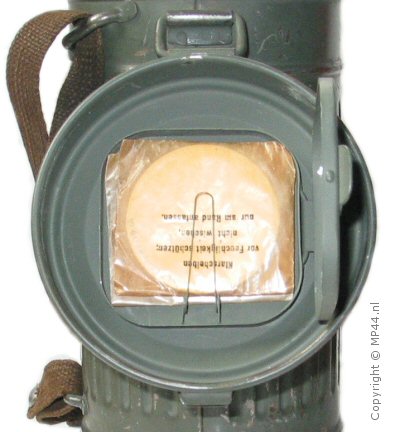
Left, the opened compartment which show the spare lenses.
The spare lenses are packed in paper and are held
in place by a spring.
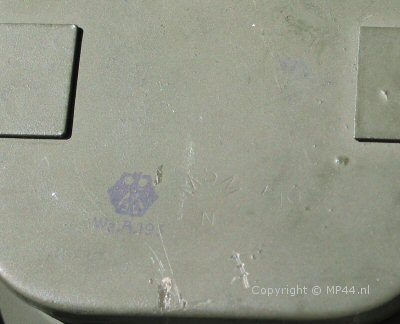
Left the stamps on the spare glasses compartment lid.
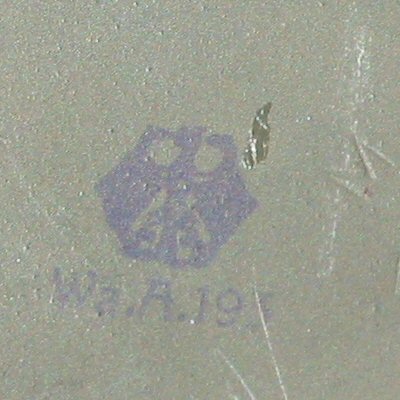
Detail of the markings:
Left : Old style (Reichsheer) Waffen Amt stamp 193
Below Left: manufacturers mark (unknown) MSM with N below
Below Right: Year of manufacturing 1936


Wehrmacht model short case (1936 - 1938)
This model was introduced in 1936 and is based on the model introduced in 1935.
Consequently, the dimensions are exactly the same as with the before mentioned case.
The
main difference is the closing lid which now uses a spring loaded latch.
This type of latch will be used for the remainder of the war and is also
found on other pieces of equipment.
Detail pictures can be found under the section of the long wehrmacht can
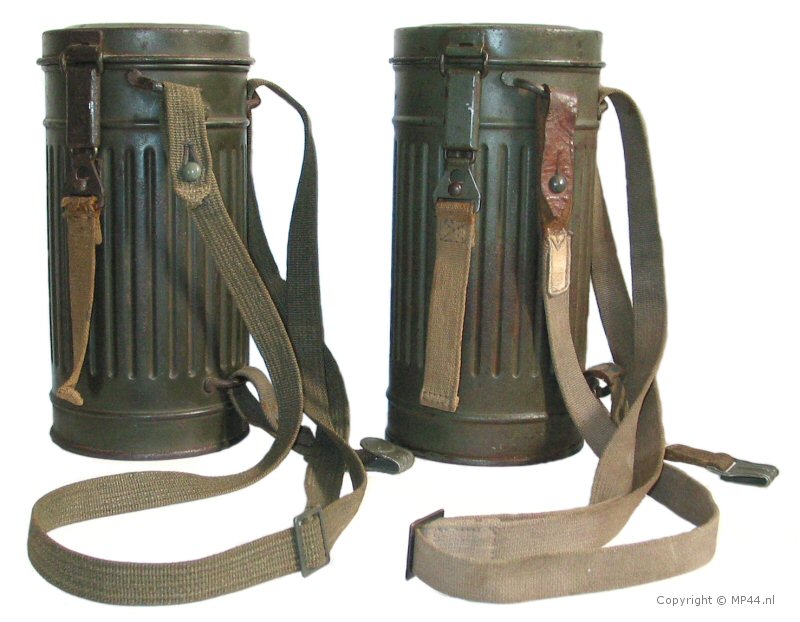
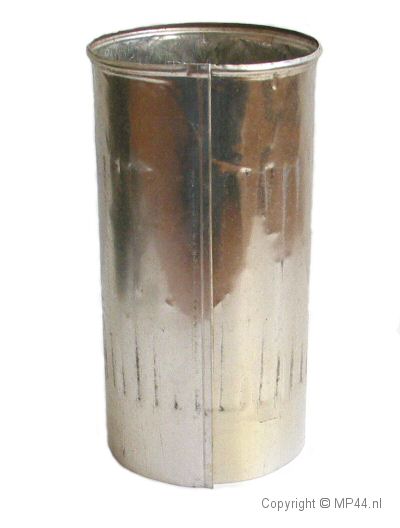
Left : Another new feature introduced in this type of can is the aluminium insert.
This sheet metal tube is not present however in every can !
Wehrmacht model long case (1938 - 1945)
Somewher in 1938 this model of can was
introduced, probably because of the more stiffer type of mask that was worn
inside
(the model 38 mask is entirely made out of rubber)
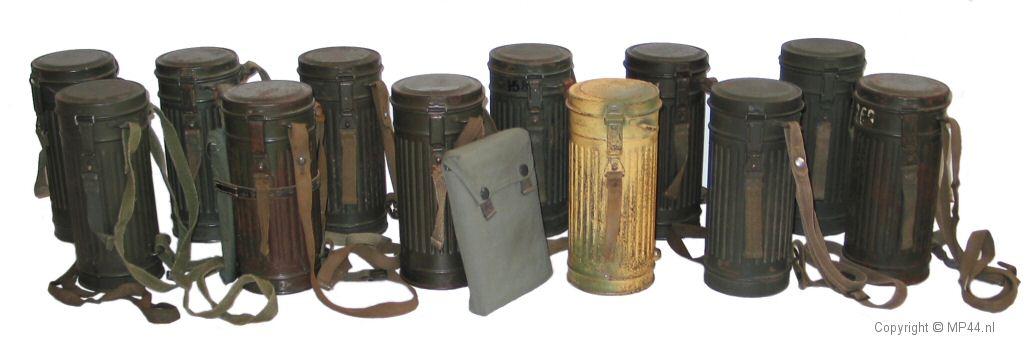
Below detail pictures of the lid and
the spring-loaded latch with webbing
pull strap with maker code frn44.
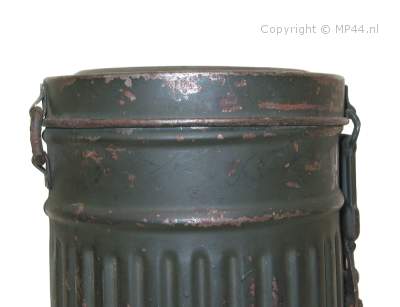
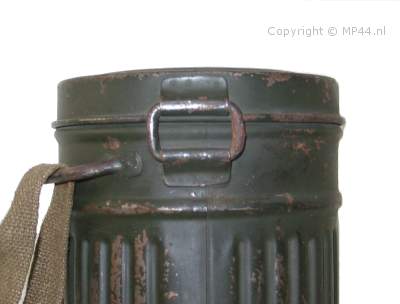
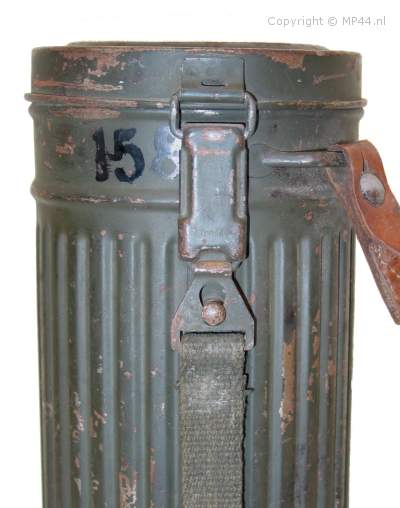
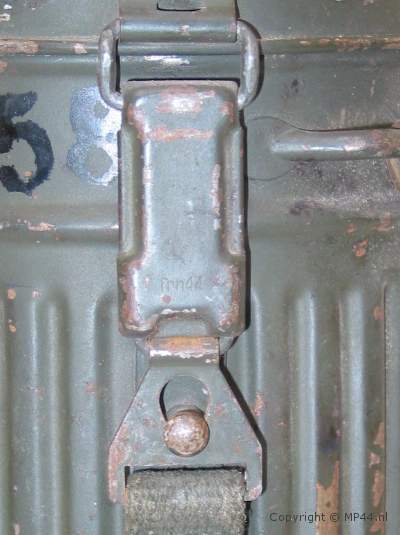
Below, pictures of the opened case, and a detail picture of the stud that holds the latch in closed position.
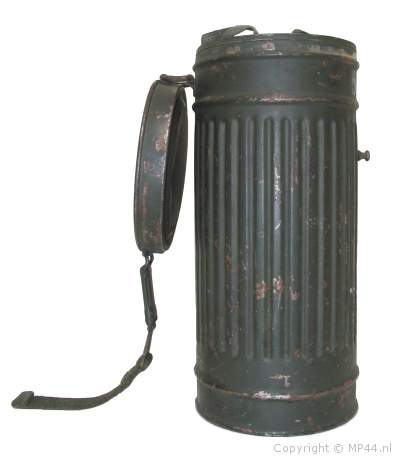
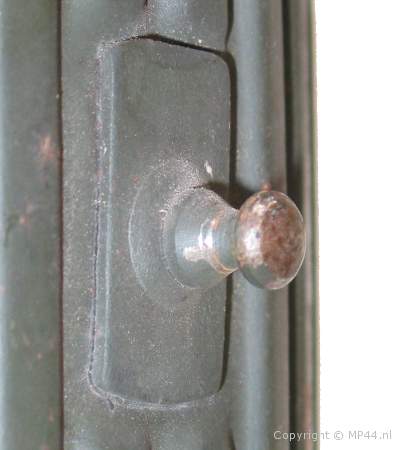
Method of wearing the gasmask case:
The gasmask case has a webbed
shoulder strap attached to two metal eyes near the lid.
The adjustable strap forms a loop which goes over the left shoulder.
The short webbed strap with hook attaches to the metal eye at bottom of
the case,
and is secured to the belt so that the case almost hangs horizontal.
Below left: the picture is made on a
1/6 scale Dragon figure and shows the official way to wear.
Ofcourse there were exeptions to the rule, and so many pictures can be
seen where the gasmask can
be seen worn over the right shoulder.
Below right: shows the webbing straps on an original gasmask cannister
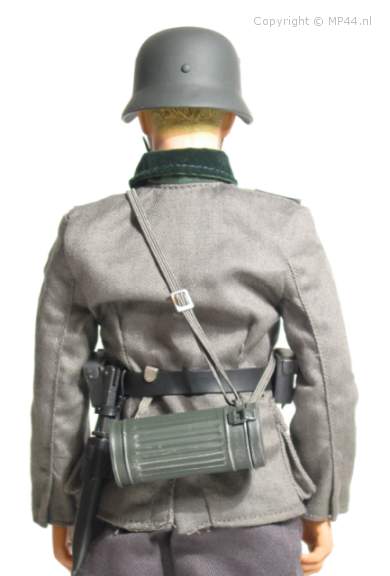

Below: the normal strap configuration on a gasmask cannister
Also seen are the Verstärkungsschieber (reinforcement slides) which are shown here
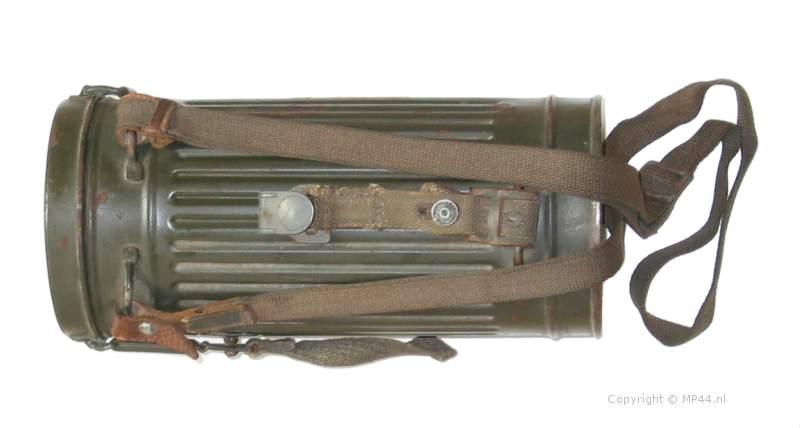
Below: gasmask can without straps to give a better view on the metal eyes.

Below: the underside of the gasmask
can
On the left an older model is shown.
On the right one can clearly see a D which stands for "Dicht".
These cans were watertight

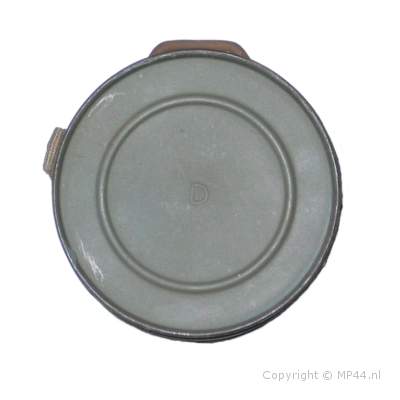
On the inside of the lid is a compartment which holds the spare glasses.
The name of the owner (Unteroffizier Remlinger) has been painted on the one on the right.
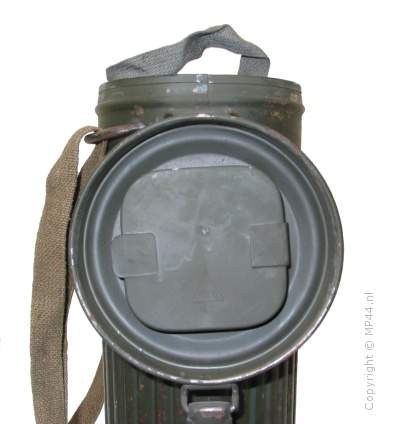
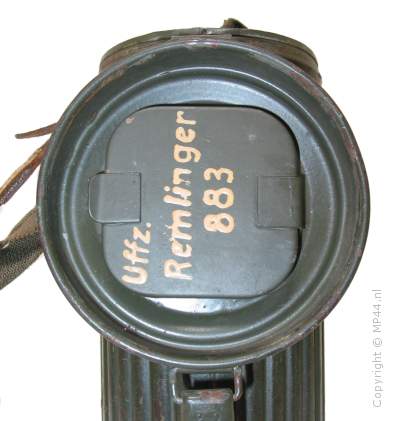
Below, the opened compartment which
show the spare glasses.
(normally two pairs, but after 1942 four pair of spare glasses were
issued)
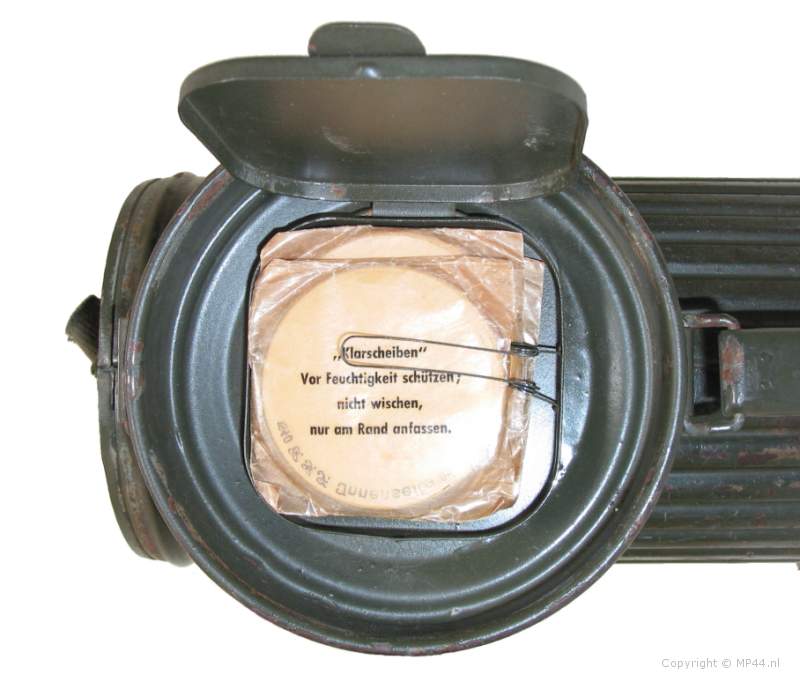
Below, the bags which holds the spare glasses.
The text on the left one says:
"Clear discs"
Protect from moisture,
do not wipe,
only hold at the edges
The text on the right one (which is the opposite side) says"
Insert clear disc in such a manner,
that imprint
" i n s i d e"
is readable from the inside of the mask.
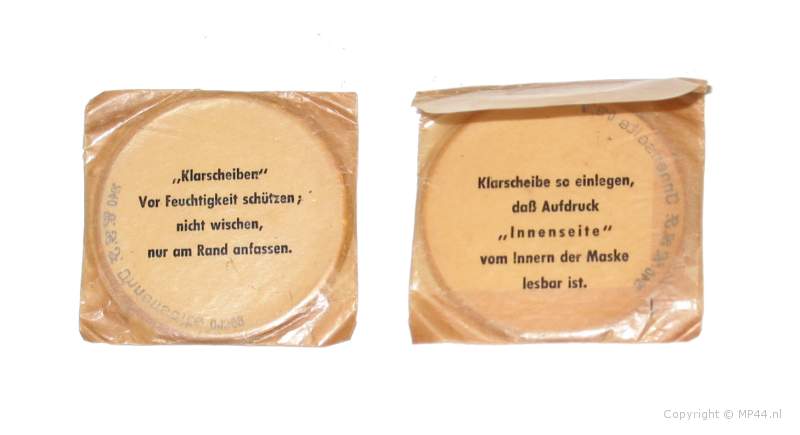
Below left some different packages
Below right the contents of the package, in this case stamped 1940
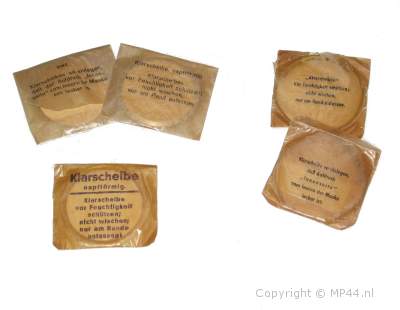
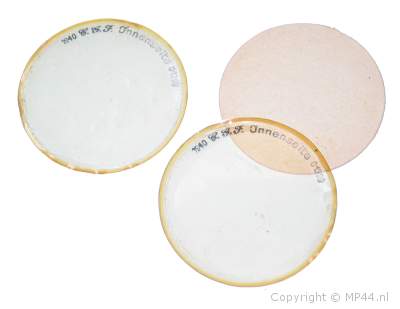
Besides the glases, there are more
items inside the can.
Shown in the picture below are a cleaning cloth (Reinigungslappen) and retaining spring
(Lappenhalter)
The Retaining spring (Lappenhalter) was introduced by an order dated november 28, 1939 (H.M.1939, Nr. 483)
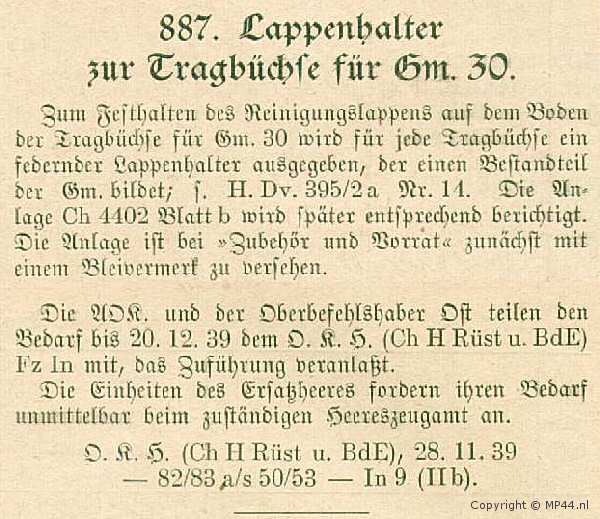
887. Retaining spring for the carrying can for Gasmask 30.
In order to retain the cleaning
cloth on the bottom of the can for the GM.30 a retaining
spring is supplied, that forms a part from the Gasmask (H.Dv. 395/2a
No. 14).
The appendix Ch 4402 Page b will be
later adjusted accordingly.
In the mean time the appendix has to be adjusted with pencil in the
section
"accesories and stock"
- the rest is some ordering information -
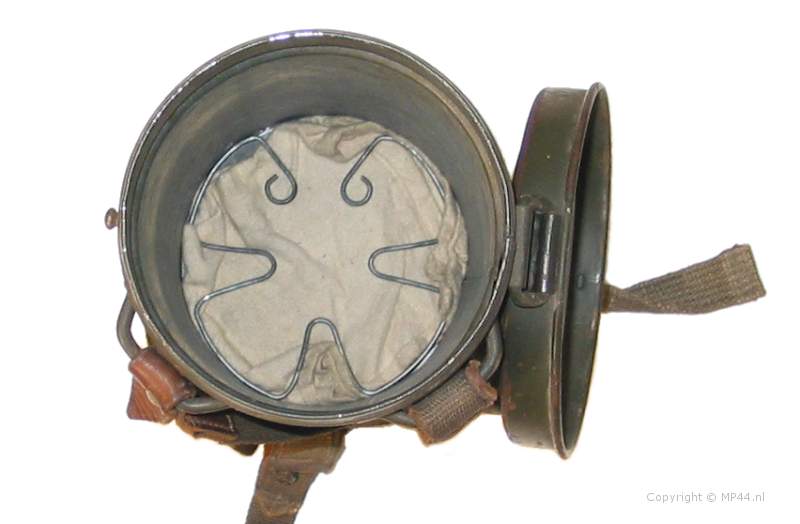
The cleaning cloth can be used to wipe the lensesof the mask
The cloth measures aprox 22 cm x 24 cm
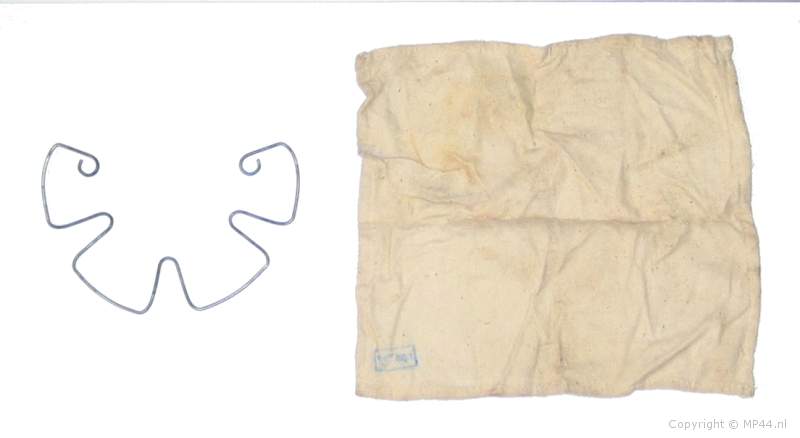
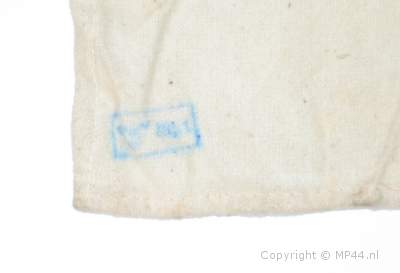
On the left, the WaA stamp can be seen.
Unfortunately the stamp can't be read.
On the next page the different type of gasmasks will be shown